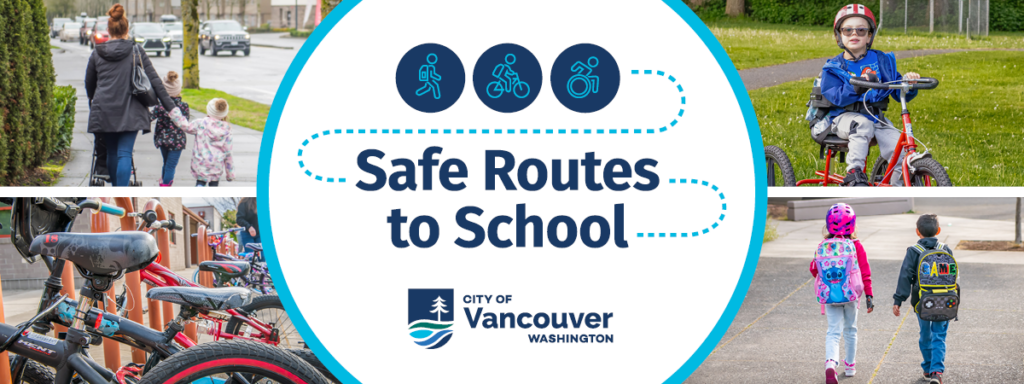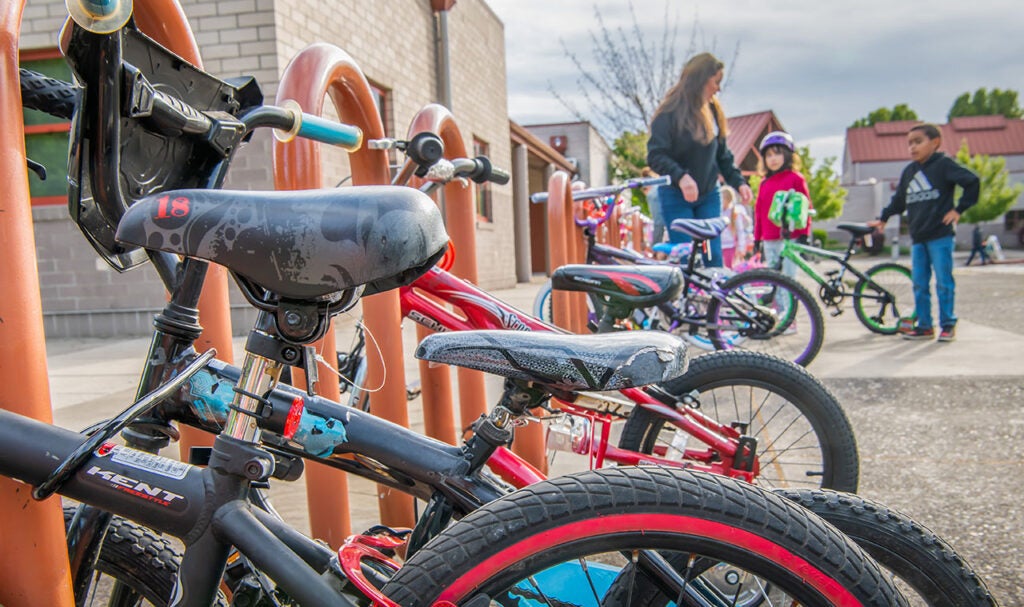Safe Routes to School Program

The City of Vancouver envisions a future where walking, rolling, biking and small mobility options are safe, convenient, accessible and desirable for all students and families to get to and from school and around their neighborhoods. To get there, we are starting a Safe Routes to School program.
What is a Safe Routes to School program?
Safe Routes to School (SRTS) is a national program designed to make active transportation options safe, convenient and fun for children traveling to and from school. Vancouver’s Transportation System Plan calls on City staff to develop a SRTS program that encourages students and caregivers to walk, roll and bike to school along safe paths. It’s another way the City can reduce congestion in neighborhoods, boost community health, reduce emissions and make sure students can access safe streets.
Program goals
The goals for the City of Vancouver SRTS program focus on the “Six Es” of a successful Safe Routes program:
Engagement
Listen to students, families, teachers, school leaders and community organizations to be responsive to the needs and perspectives of the community. Build opportunities to share ideas.
Equity
Ensure SRTS initiatives benefit all students. Use data to prioritize students at schools that are most impacted by unsafe traffic issues.
Encouragement
Get students and their families interested in walking, rolling and biking to school through events and activities.
Engineering
Fund, build and support street improvements that make walking, rolling and biking to school safer, more comfortable, more convenient and more fun.
Education
Teach bike safety skills at school. Teach drivers about school zone safety. Share information about transportation options and the associated benefits.
Evaluation
Track the progress of the program and monitor which efforts are effective and what can be improved.

Why is Safe Routes to School important?
Fewer kids walk and bike to school today than they did 50 years ago
- In 1969: 48% of K-8 students walked or biked to school. By 2009, only 13% of students walked or biked to school.1
- In 2022:
- 51% of K-12 students were driven or drove themselves to school
- 33% took the school bus or other transit to school
- 10% walked or biked
SRTS programs make streets safer and more comfortable for everyone
- Safer students: Street improvement projects and safety education help students getting to and from school. SRTS encourages students and families to walk, roll or bike to school in groups.
- Cost savings: Fewer school pick-ups and drop-offs can reduce transportation costs for families and for schools that offer bus service.
- Reduced traffic congestion: More students walking, rolling or biking to and from school reduces vehicle congestion during school drop-off and pick-up.
- Cleaner air: Encouraging more students to walk, roll or bike to school can improve air quality by reducing the number of vehicle trips, the line of vehicles idling at school and the miles that families drive each year.
- Healthier students: Walking, biking and rolling to and from school gets kids moving and can improve their overall physical and mental health.
- Better academic performance: For some students, getting to school on time, or at all can be difficult.
- More connected communities: SRTS programs provide opportunities for students and families to connect as they walk, roll or bike to and from school together, strengthening community connections.
1National Center for Safe Routes to School. 2011. How children get to school: School Travel Patterns From 1969 to 2009. PedBikeInfo.com www.pedbikeinfo.org/pdf/NHTS_school_travel_report_2011_0.pdf
Get involved
- Sign up for email updates about the SRTS program in Vancouver
- Connect with your local school to see how you can help in your neighborhood
Questions or comments
- Email the program team at: VancouverMoves@cityofvancouver.us



